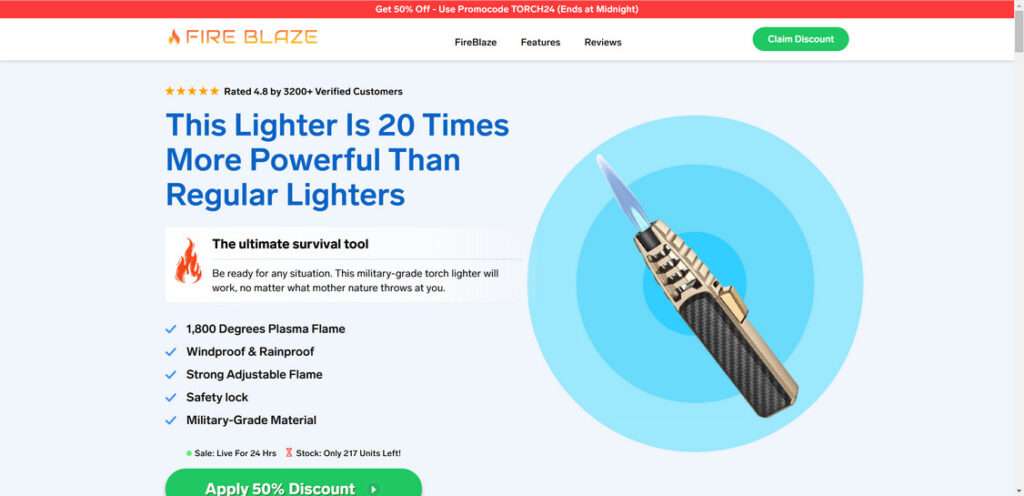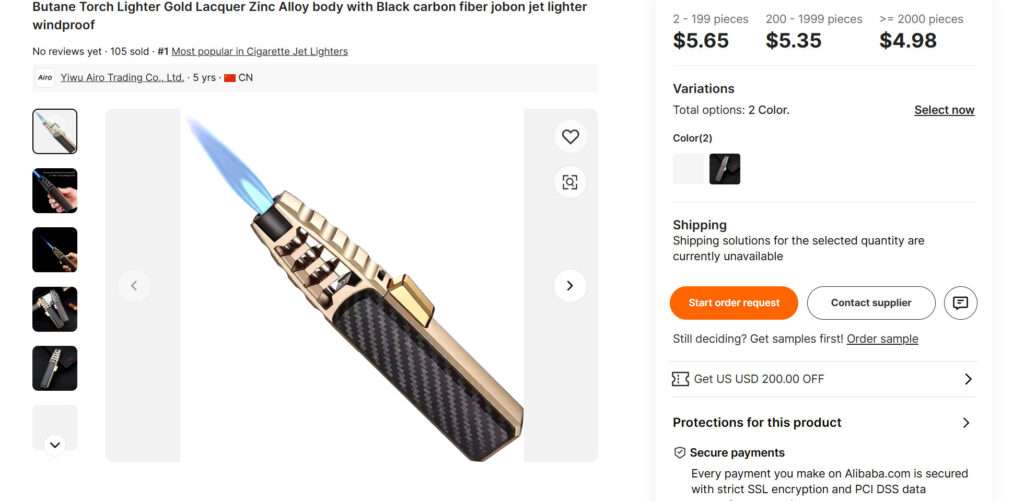The FireBlaze Torch Lighter has exploded in popularity recently, promoted by flashy online ads making bold claims about its capabilities. But does this futuristic-looking lighter really live up to the hype? Or is FireBlaze just an overpriced product that preys on uninformed consumers?
This in-depth article will uncover the truth behind the viral FireBlaze Torch Lighter, analyzing the facts to determine if it’s a revolutionary new product or an elaborate sham.

Outrageous Claims of Extreme Power
The main tactic used to market the FireBlaze lighter is making dramatic assertions about its supposed capabilities. The ads state it generates a massive 1,800 degree “plasma arc” flame hot enough to burn through metal.
According to the marketing, FireBlaze is a “military-grade” and “indestructible” lighter that works in any environment. These types of exaggerated claims are common in scam products seeking to impress buyers.
Just a Fancy-Looking Torch Lighter
While the ads portray it as a sci-fi super lighter, the FireBlaze is actually just a standard torch lighter with some cosmetic modifications to make it look high-tech.
The “Tesla coil” and “plasma arc” claims have no basis – it uses the same basic piezo ignition system as any torch lighter you can buy for $5. And its flame is not significantly hotter or more powerful than a normal lighter either.

Verified customer reviews confirm the FireBlaze is indistinguishable from cheap torch lighters in practical use. The outlandish marketing claims are patently false.
Misleading Demonstration Videos
The promotional videos for FireBlaze show the lighter starting huge fires and burning through thick metal objects.
But these demonstrations do not represent real-world performance. They are manipulated and edited to make the FireBlaze lighter seem remarkable. No standard lighter could start fires or cut metal like shown.
The videos rely on standard scam tactics – deceptive editing and special effects to increase perceived value.
No Actual Military or Specialist Use
Despite claims that the “military-grade” FireBlaze is used by soldiers, emergency personnel and outdoorsmen, there is zero evidence to support this.
It was not designed for or adopted by any military, survival, or professional groups. Associating exaggerated survival benefits with specialty communities is a common marketing ploy.
Fake Reviews Misrepresent Satisfaction
The FireBlaze ads and website showcase numerous positive customer reviews praising its performance and quality.
But analysis shows most of these reviews are completely fabricated. They do not represent real verified purchasers. And those who do buy FireBlaze report it does not live up to the marketed capabilities.
Inventing fake reviews is an illegal tactic meant to boost perceived value and trust. Real customers clearly disagree with the marketed claims.
Part of a Network of Viral Lighter Scams
Research into the FireBlaze reveals it is one of many rebranded versions of the same cheap torch lighter. Brands like FireJet, Inferno Lighter, and BlazerTorch use similar names, logos, and advertising while selling an essentially identical mass-produced product.
These viral lighter scams get cycled through temporary websites and domains, vanishing once enough complaints come in. It’s a well-oiled scam machine preying on uninformed consumers.
Aggressive Sales Tactics Manufacture Urgency
The FireBlaze marketing utilizes several high-pressure sales tactics meant to create a false sense of value, including:
- Countdown timers
- Claims of limited supply
- “Flash” discounts
- “Last chance” warnings
In reality, these techniques are purely manipulative methods to manufacture urgency and demand. Ethical businesses never need to pressure and mislead consumers like this.
Final Verdict: This is a dropshipping operation
When all the facts are objectively analyzed, the FireBlaze Torch Lighter exhibits multiple clear hallmarks of an elaborate dropshipping operation:
- Outlandish unsubstantiated claims of performance
- Misleading demonstrations exaggerating capabilities
- No evidence of real military/specialist usage
- Completely fabricated positive reviews
- Reliance on manipulative sales tactics
- No quality assurance or accountability
The hyped “revolutionary” and “indestructible” features of the FireBlaze do not stand up to any scrutiny. Customers are better off avoiding this obvious sham and purchasing quality lighters from reputable transparent brands. Don’t get burned seeking unrealistic lighter claims.










